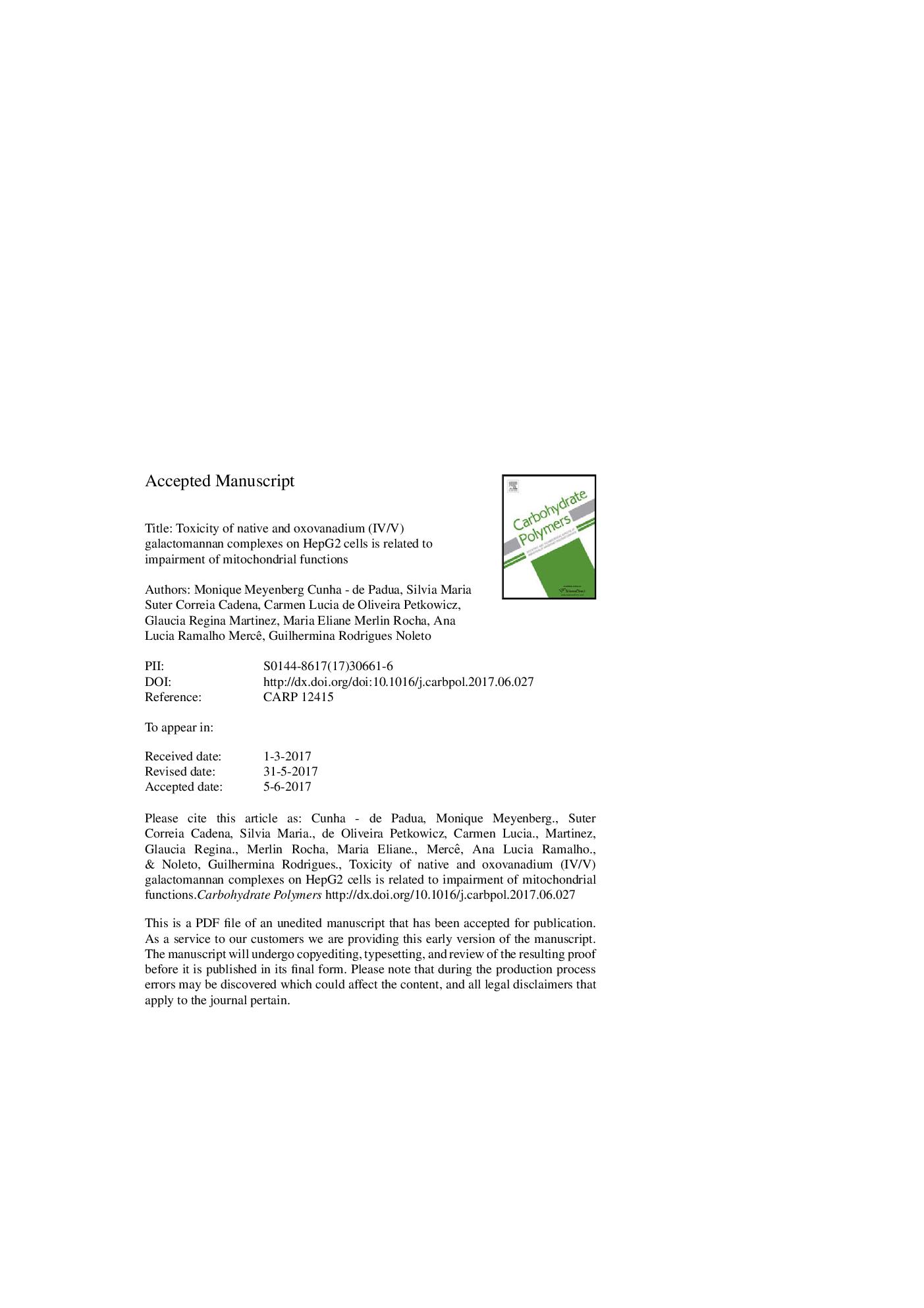| Article ID | Journal | Published Year | Pages | File Type |
|---|---|---|---|---|
| 5157444 | Carbohydrate Polymers | 2017 | 33 Pages |
Abstract
Polysaccharides and vanadium compounds have been studied due to their antitumor potential. In this study, the cytotoxic effects of galactomannan preparations on HepG2 cells were investigated. Native galactomannan from S. amazonicum (SAGM) and its modified form (MSAGM) were complexed with oxovanadium resulting in SAGM:VO and MSAGM:VO, respectively. The complexation was confirmed by NMR, FTIR, and AAS. SAGM and MSAGM:VO (250 μg/mL) after 72 h decreased viability by 51% and 58%, respectively, while the inhibition of the HepG2 cell proliferation was of â¼27% and â¼46%, respectively. SAGM and MSAGM:VO (250 μg/mL) significantly inhibited all states of respiration (basal: 85% and 63%; uncoupled: 90% and 70%; and leak: 30% and 58%) after 72 h. ROS levels increased by â¼149% after the treatment with MSAGM:VO (250 μg/mL) for 72 h, while ÎΨm decreased by â¼50%. Our results indicate that galactomannan preparations from S. amazonicum, especially SAGM and the MSAGM:VO complex, could be considered as potential antitumor drugs for further investigations, once they have the ability to make HepG2 cells susceptible to death by affecting vital cellular processes such as respiration and ROS generation.
Related Topics
Physical Sciences and Engineering
Chemistry
Organic Chemistry
Authors
Monique Meyenberg Cunha - de Padua, Silvia Maria Suter Correia Cadena, Carmen Lucia de Oliveira Petkowicz, Glaucia Regina Martinez, Maria Eliane Merlin Rocha, Ana Lucia Ramalho Mercê, Guilhermina Rodrigues Noleto,
